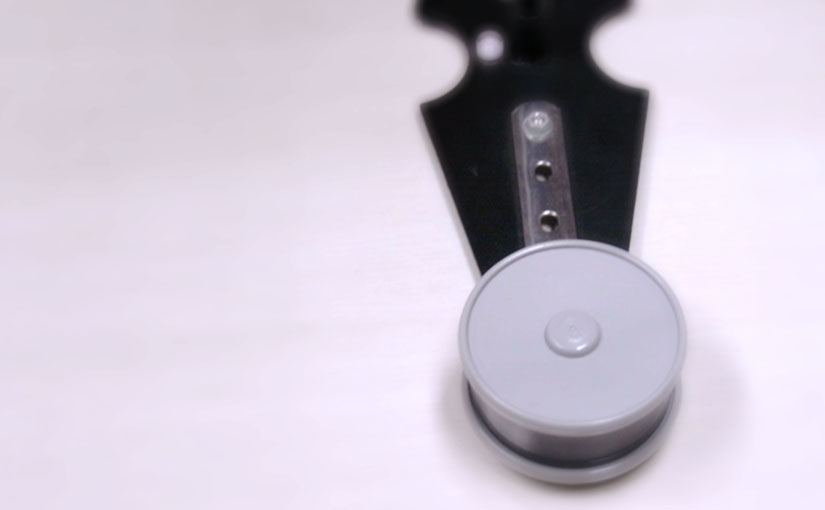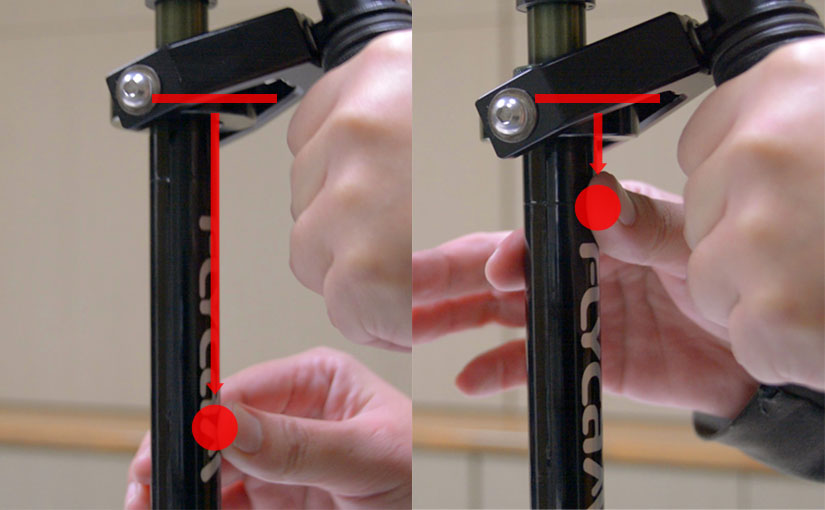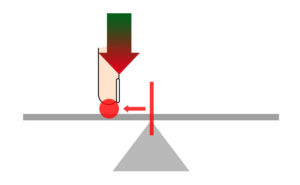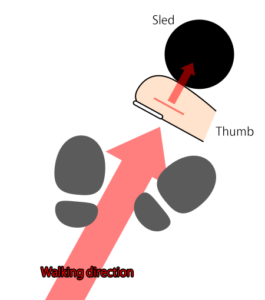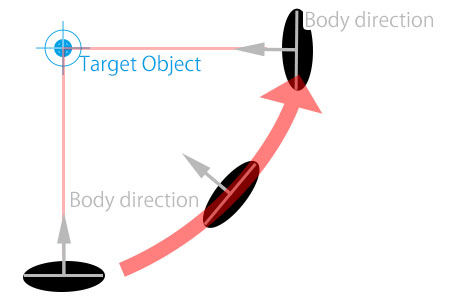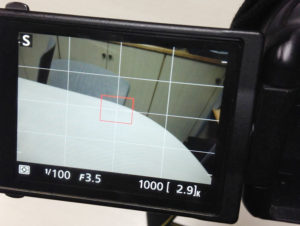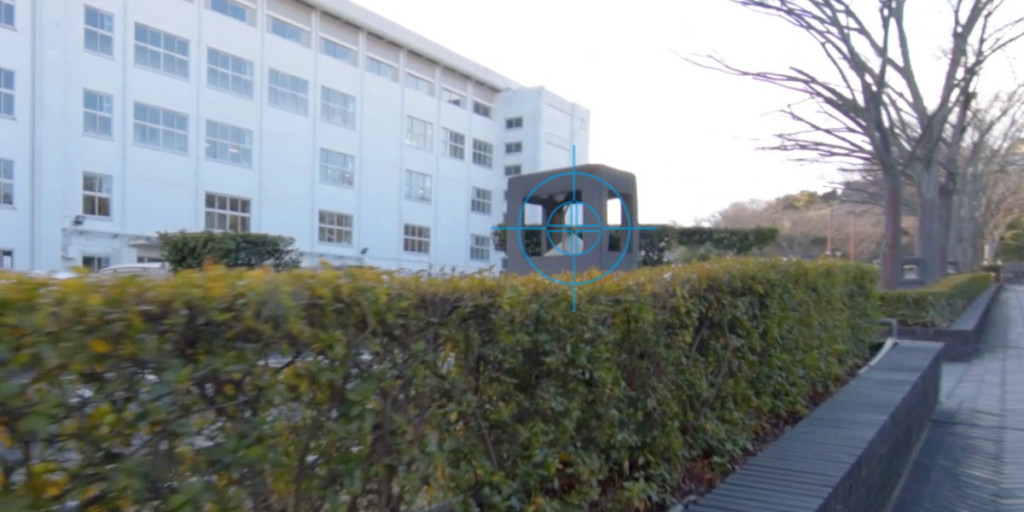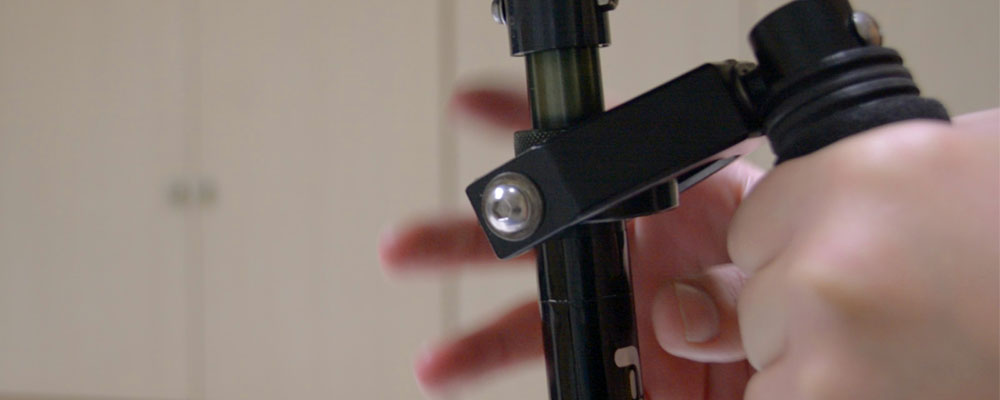目次 [ Contents ]
I uploaded to Youtube the video which shows how I hold the camera stabilizer. I will write about for more in this article.
This is the clip.
How to grip the sled
At first, these are explanations of my own research to camera stabilizer. So please find your own way by this article as a reference.
Where to hold
You can find lots of demonstrations of stabilizer operation, if you search on Youtube or something. The way of doing it is diverse. Anyway, everybody has a fundamental question. “Where should I grab?”
There is a difference in ease of holding by people. But basically I think the most effective position to grab is under the axis.
The reason is “hard to move”.
For example, if you move away from the axis, accordingly you can move it with a light force. But, at same time, it moves even if you touch it lightly. So, more delicate control is needed.
Conversely, if you glab near the axis, it will be difficult to move it easily. So you can operate rough. This is the advantage of grabbing the axis near.
However, you need strong finger to control threads, and much more careness not to touch the gimbal.
holding method
Basically Hold sled with your thumb.
Push the sled with the thumb like doing thumbprint. At same time, pinch the opposite side by other fingers. This is an image like making a triangle with the fingers.
thumb’s direction
If you grab it sideways to the walking direction, unwilling movement is easy to be transmitted. So it is ideally that the belly of the thumb being touched is oriented to walking direction as much as possible.
Also, if you want to tilt or pan, I recommend you facing thumb’s belly in the direction you want to move.
Operation
On the video, I was grabbing sled tightly and making faster “drop time”, because the wind was strong. But, it is ideal that slightly touch the sled. Do not move the sled, but lead to direction little by little by soft touch.
PAN
Roll the sled by sliding thumb’s belly with support by other fingers.
In other way, direct your body’s orientation to target object. Holding sled not to rolling.
Practically, you need to combine those two technique, if you want to pan. I was not conscious of myself too much, supporting body orientation is much important technique.
It might be effective practice that facing your body naturally to the target object.
TILT
With the thumb as the fulcrum, push the forefinger to your body when you want to tilt up. On the other hands, push the little finger if you want to tilt down. It’s like rotating from the wrist.
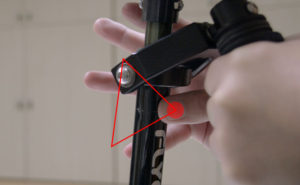 |
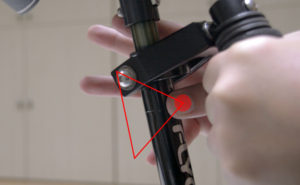 |
It is far more difficult to tilt the camera stable than panning. You should practice this without walking at first.
Practice tips
Display grid or mark on your screen
I think most DSLR has functions that display a grid line or a target mark on the screen. So you should display it on and make practice to chasing your target object.
Although I do not actually do it, if your DSLR doesn’t have the functions, try seal something transparent on the monitor, draw a line with a pen, and substitute. It might works.
Do not shoot for people
Although shooting along the people walking is very interesting, it prevent your skill up. Because you and your target people is always shaking, you can’t never notice lack of your technique. In other words, even poor operator looks fine.
But if you practice with standing object or landscape, you can see much more issues on your technique.
So if you decide to “practice” aiming for progress, I recommend you to go alone.
Practice to rolling and sudden stop
I am doing it often in the video, to stop sled rolling needs very high technique. Even if you can stop it, it might be totter image without sensitive touch. Do practice of gentle touch on rolling sled.
Keeping shoot signs by walking around
It’s very very tough training. To achieve this shot you need two technique, pan and tilt. But I recommend you this training. Because I’ve just repeated this exercise. This practice will let you control the sled without continuous watching for monitor in the end.
